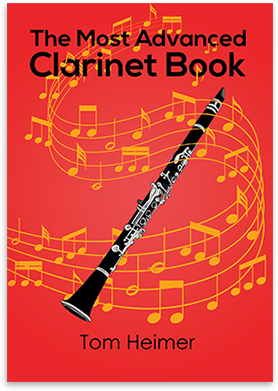
THE CLARINET JOURNAL
The Clarinet Journal official publication of the International Clarinet Association.
Review by Robert A. Riseling. March, 2022 issue.
Heimer has studied with some of the major clarinet pedagogues and has a wide ranging career of performing, conducting and teaching within various areas of the music profession.
This book is the Vade Mecum on steroids and content substantiates its claim. If there are any awkward and difficult challenges not presented, I missed them. There are 50 introductory very practical, directed short exercises dealing with specific clarinet problems of fingering and/or smooth connections with suggestions for practice. Alternate fingerings are included, ones that might be contrary to normal choice but provide an additional attention to fluidity and coordination. Page 21 presents excellent practice ideas incorporating other materials, ways to alter etudes to create different problems, etc.
These are followed by 27 single page etudes, the titles indicating the focus of each and challenge every level of a clarinetist’s skills. Some quote and expand passages from the repertoire. A first reading is unlikely to reach the bottom of the page as the difficulties increase. It is more important to discover and deal with individual passages before mastering the whole. Alternate fingerings should be substituted (a la the introductory drills) to develop and control difficult coordination between hands.
Even when “learned” these etudes present problems when coming back to them after a few days. The reading effort is normal in some. In others, fingerings, articulation and rhythmic patterns require a constant focus as there are so many changes in proximity. One cannot predict or anticipate the next pattern and “eyes-brain-message” to fingers/air/embouchure requires total concentration.
The biggest challenge in two of the etudes is the notation of accidentals. The intent of requiring sharp focus and translating these awkward passages into speedy eye-hand pattern recognition is understandable. However, C E G is part of our trained history and B# E Abb may be enharmonically equal to the ear but a nightmare to the eye and an unnecessary impediment to the music. A composer would be hard pressed to find performers willing to play this music where the notation creates another barrier to the learning process. Only the practice room can afford such time. Recommended for all serious players.
Post Views : 2677